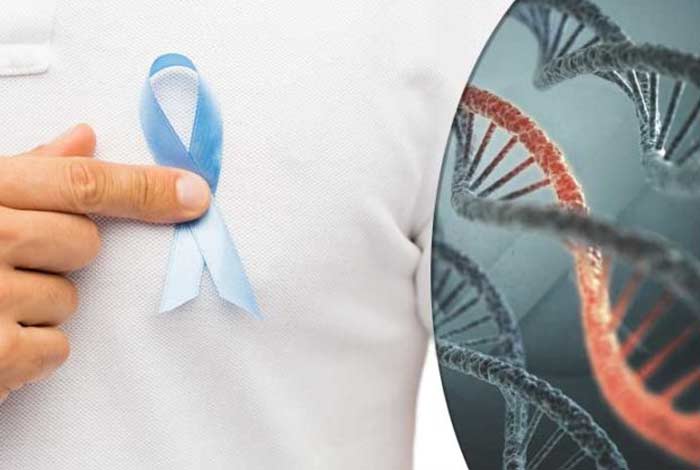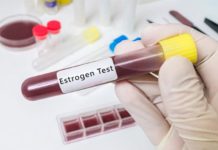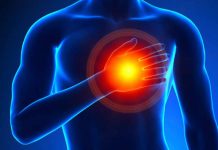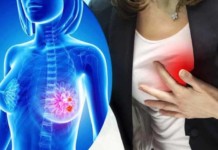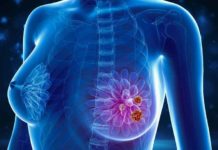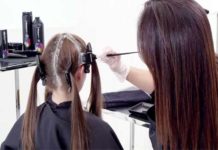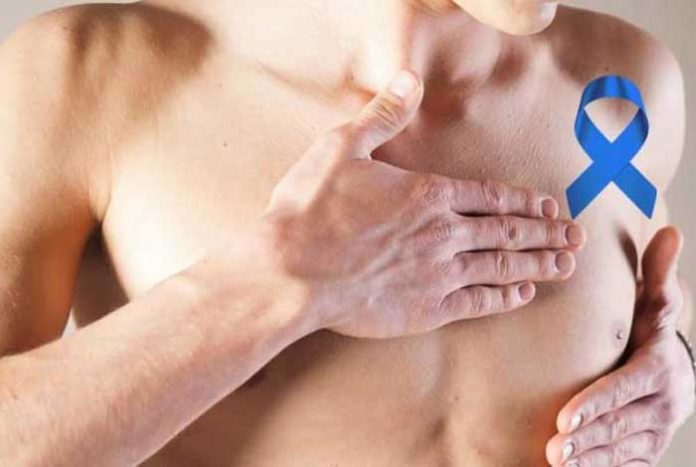
Overview and Facts
Breast Cancer in men is a rare condition. Even though men do not have breasts like women, there is still a chance that men may get breast cancer. The breasts of a man are very similar to that of a woman before puberty. The point of difference lies in the fact that breasts grow and develop in females, but this does not happen in males.
But, since the breast tissue is present in men, they can get breast cancer. Men have the same type of breast cancer like women. However, they don’t get cancer that is related to the parts that make or store milk.
Breast cancer in men is generally diagnosed later than breast cancer in women. This is because there is less suspicion of cancer in men as far as breasts are concerned. Also, the breast tissue is present in small amounts in males, making it difficult to detect cancer. Tumors can even metastasize to surrounding issues.
Usually, men under 35 do not get breast cancer. In males, the chances of having breast cancer increase as they cross the age of 35. Generally, these happen in men in the age range of 60-70 years.
Some things that increase the odds of the occurrence of breast cancer are:
- Breast cancer in a relative, who may be a female
- Radiation exposure to the chest
- Breast enlargement due to intake of some drugs or undergoing hormone therapy
- Some infections or poisons
- Severe liver Disease, called cirrhosis
- Testicular injury, undescended testicle
- Taking estrogen
Less than 1% of all breast cancers occur in men. It has been estimated that about 2550 men will be diagnosed with breast cancer in the U.S. in 2018. The risk of having breast cancer in men is as small as 1 in 1000.
Types and Symptoms of Breast Cancer in Men
Types of Breast Cancer in Men:
Breast cancer can be classified into various types depending on how the cancer cells look under the microscope. It is of following types:
- Ductal Carcinoma In Situ: Also known as intraductal carcinoma, it is a preinvasive breast cancer. In this, the cells lining the ducts change to look like cancer cells. It makes up for about 10% of breast cancer cases in men. It can be cured with surgery.
- Invasive (Infiltrating) Ductal Carcinoma: It originates in the milk duct of the breast. It breaks through the walls of the duct and starts growing in the fatty breast tissue. It may spread to other parts via bloodstream and lymphatic system.
- Infiltrating Lobular Carcinoma: This originates in the breast lobules and grows in the fatty tissues of the breast. It is a rare form of breast cancer and around 2% of male breast cancers fall in this category. This is because there is not much lobular tissue in men.
- Paget disease of the Nipple: This starts in the ducts of the breast and metastasize to the nipples. The skin of the nipple becomes red and scaly, and there is itching and bleeding sometimes.
- Inflammatory Breast Cancer: Though it is a very intense type of breast cancer, it is quite rare. Lump is not formed in this, but breasts appear swollen, red and warm.
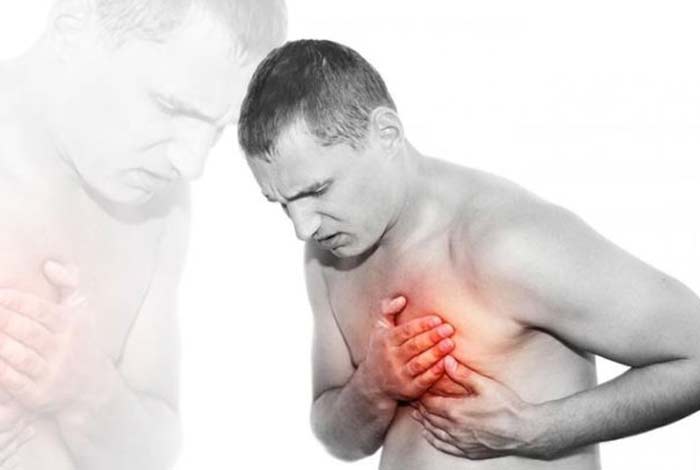
Symptoms of Breast Cancer in Men:
So far, we have discussed that breast cancer not only occurs in females, but also in men.
Possible symptoms of breast cancer in men are listed below:
- Lump or swelling, which is mostly painless
- Discharge from nipples
- Redness or scaling of the breast skin
- Nipple retraction
- Puckering of skin
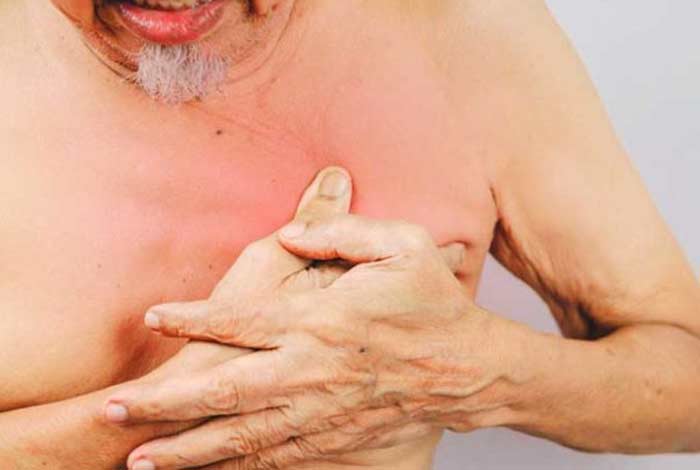
Risk Factors of Breast Cancer of Men
Since men are not generally screened for the condition, so it becomes even more important to understand the risk factors of breast cancer in men. The following are some risk factors associated with this rare condition:
- Age: Risk increases as one grows older. This is true for women as well. It is generally found in men in the age range of 60-70. The average age of diagnosis for men is 68 years.
- High Levels of Estrogen: Growth of breast cells happens due to the presence of estrogen. The level of estrogen may be high in men because of taking hormonal medicines, being overweight, environmental exposure to estrogen and alcoholism which limits the ability of the liver to maintain normal estrogen levels in the blood. Having some liver disease which results in lower androgen levels and higher estrogen levels.
- Klinefelter Syndrome: Men with this syndrome have higher levels of estrogen or female hormones. These men are at higher risk for developing breast cancer. This condition is present at birth and affects 1 in 1000 men. These men have more than one X chromosome.
- Family History of Breast Cancer or Having Genetic Mutations: The chances of man having breast cancer are higher if there are other men in the family, who have had the condition. If there is a breast cancer gene abnormality running in the family, the risk is even higher.
If men get BRCA1 or BRCA2 (breast cancer) genes then they have higher chances of having breast cancer. Also, it has been observed that cases of male breast cancer are found in men, who do not have any family history of breast cancer and when there is no genetic abnormality. - Radiation Exposure: If a man has undergone some treatment that involves radiation to the chest like lymphoma, then the risk of breast cancer increases.
- Obesity: Fat cells convert androgens to estrogen. Higher number of fat cells increases estrogen levels and thus, increases the risk of breast cancer.
- Testicle Surgery: Having inflamed testicles or surgery to remove testicles can increase the risk of male breast cancer.
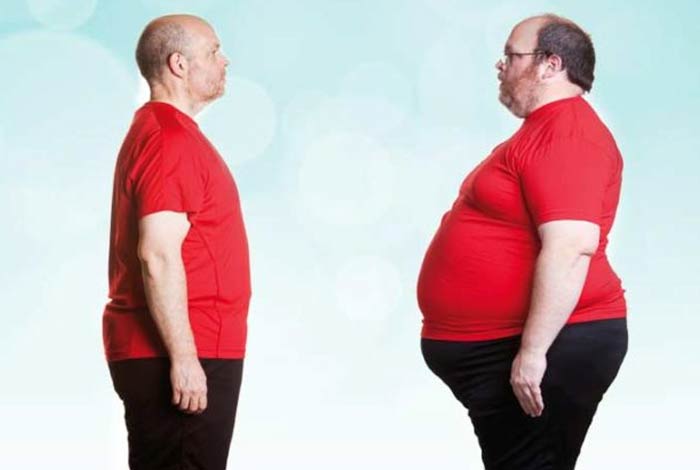
Do I have Male Breast Cancer?
The symptoms of breast cancer in males may be similar to those of other conditions like gynecomastia. Gynecomastia is harmful swelling of breast tissue in males. It is present in newly born and during puberty.
However, breast cancer in men is a malignant condition and may be deadly if not treated. Gynecomastia may happen due to some medications and when medications are withdrawn it usually resolves.
Signs of breast cancer like lump, discharge and pain call for immediate attention of a doctor. For breast cancer, chemotherapy or radiation surgery is available. In order to correctly diagnose the condition, medical assistance is mandatory.
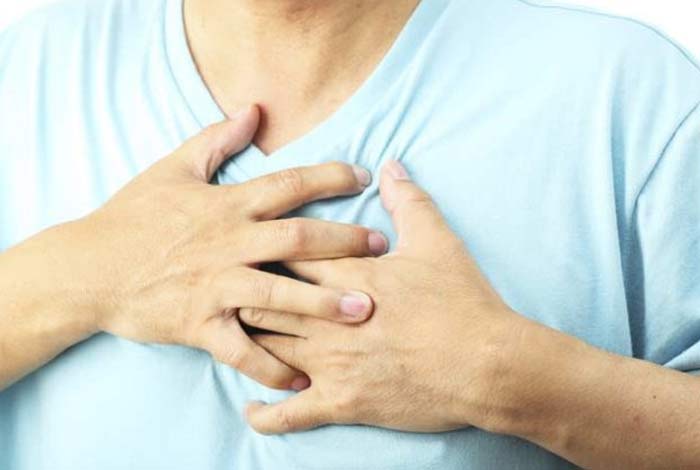
Causes and Prevention of Breast Cancer in Men
Causes of Breast Cancer in Men:
The exact cause why cells in the breast become cancerous is not known. However, some of the possible factors are discussed below:
- Estrogen Receptors: Around 90% of men with breast cancer have estrogen receptors on their cell membranes. These receptors cause the binding of the estrogen molecules to the cancer cells. This further activates cell growth and multiplication.
- Klinefelter’s Syndrome: In this, newly born boys are born with much higher level of estrogen than what is normal. Men with this condition have 20 times more likelihood of developing male breast cancer as compared to their counterparts.
- Gene Mutations: BRAC1 and BRAC2 gene affect about 5% of the men and may lead to male breast cancer. Research suggests that male breast cancer also runs in families.
Prevention of Male Breast Cancer
There are various things that can be done by a man to lower the risk of breast cancer. It is imperative to maintain ideal body weight and refrain from consuming alcohol. In general, as the causes of the breast cancer cannot be ascertained, so it is difficult to prevent them.
The best options and ways to reduce the incidence and death caused due to this disease are detecting in the right time and getting medical help when needed. It is actually difficult to identify breast cancer early as men may not notice lumps when they are small, and attention may only get drawn towards them when they have become relatively large. Generally, men get diagnosed with breast cancer when it has reached a more advanced stage.
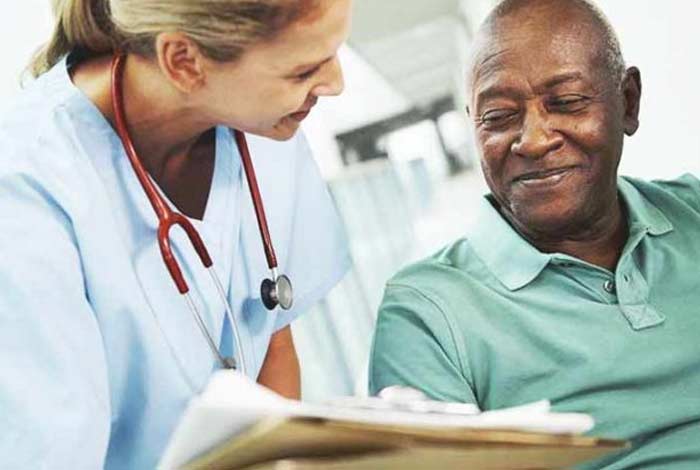
Diagnosis and Tests for Breast Cancer
A number of diagnostic test and procedures may be conducted to detect breast cancer in men. These are discussed below:
- Clinical Breast Exam: A doctor uses his hands to examine the lumps and feel if there are some other changes in the breast. The doctor also examines the extent to which the lumps have spread, how they feel and how close they are to skin and muscles.
- Imaging Tests: Mammograms and ultrasounds are used to detect any suspicious mass in the breast tissue. A mammogram is nothing, but X-ray of the breast. For conducting the mammogram, the breast is placed between two plates.
Ultrasound, also known as sonography, uses high-frequency sound waves for outlining a body part. Breast ultrasound is used to evaluate breast abnormalities found during mammography or physical test. - MRI of the Breast: MRI is used for better examination of the area of suspicion as found during a mammogram. It can be used to examine the actual size of the cancer, and rule out the possibility of any other type of cancer.
- Nipple Discharge Exam: Sometimes, one may see fluid getting discharged from the nipples. If this happens, you must get it checked. If there is blood flowing out, one must immediately consult a doctor. The nipple discharge test collects the fluid to see under the microscope if there are cancer cells present in it.
- Biopsy: Needles are inserted in the breast to isolate tissue for analyzing it in the lab. This test helps one know whether he has breast cancer and if yes, then what type of cancer it is.
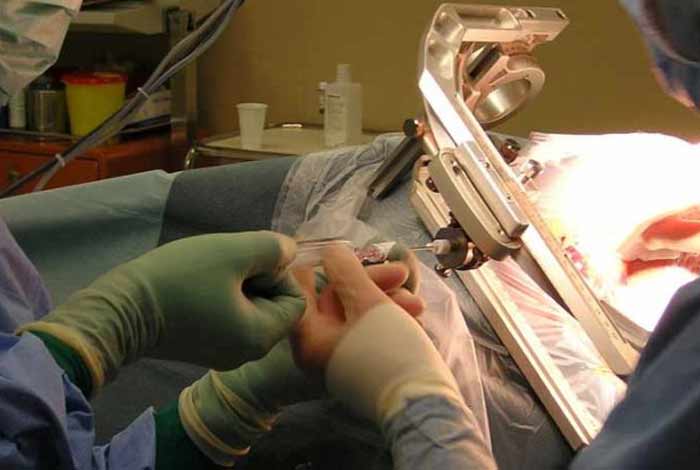
Treatment and Care of Breast Cancer in men
Discussed below are several treatment methods for breast cancer in men:
Many men with breast cancer undergo some type of surgery, known as mastectomy. For majority of the cases, a procedure is performed to remove one or more of the lymph nodes.
Mastectomy: It removes the breast tissue completely along with other surrounding tissues. In simple or total mastectomy, the entire breast is removed along with nipples. This surgery does not remove muscle tissues from beneath the breast or the lymph nodes.
In another type of surgery, called modified radical mastectomy, the entire breasts and lymph nodes under the arm are removed. One more type of surgery, known as breast-conserving surgery, is sometimes performed, in which only a part of the breast containing cancer is removed. The size of the breast removed depends on the location and size of the tumor.
Radiation Therapy for Breast Cancer: This utilizes high-energy waves for destroying cancer cells. Radiation therapy is usually given after breast-conserving surgery to decrease the chances of breast cancer coming back. If the cancer is larger than 5 cm, radiation may be required after mastectomy. Radiation is also used to treat cancer that has metastasized to other parts.
Chemotherapy: It may be used as the main line of treatment in men, whose cancer has spread beyond the breast and underarms or if it has spread after initial treatments. The treatment depends on whether the cancer shrinks, the size by which it shrinks, and how well the treatment is tolerated. Chemotherapy is treatment with cancer-fighting drugs that may be intravenously injected or be taken by mouth. The drugs travel in the bloodstream to hit the cancer cells in most body parts. It can be used before and after surgery:
- After Surgery: Chemotherapy is given to patients after surgery has been performed. This is used to kill cancer cells that may be left behind after surgery or that cannot be seen on X-rays or imaging scans. Thus, it reduces the risk of the cancer coming back.
- Before Surgery: Chemotherapy is given before surgery. The benefit of this is that it shrinks the tumor, so less extensive surgery is needed. Also, cancers that have been diagnosed as too big to be surgically treated are initially treated with chemotherapy prior to surgery.
Hormone Therapy for Breast Cancer: Medicines targeting hormonal receptors in breast cancer cells are known as hormonal therapy. This type of treatment is effective against hormone receptor-positive breast cancer. The hormonal therapies that work in women also work in men.
An anti-estrogen medicine, known as tamoxifen blocks the estrogen receptors, preventing the hormone from binding with the receptor. Aromatase inhibitors like anastrozole and exemestane are another class of drug that blocks the enzyme, aromatase, responsible for the conversion of androgens into estrogen.
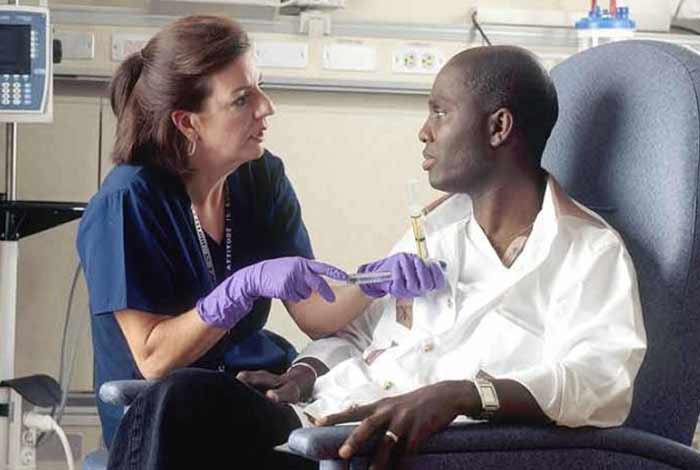
OTC Medications and Self-Management Methods for Breast Cancer in Men
As such, there are no over-the-counter (OTC) medicines available for treating breast cancer in men. Medicines are available by prescription only. In fact, taking OTC drugs without prescription of a doctor may lead to harmful side effects.
In addition to treatment for stopping or slowing the spreading of cancer, an important point is relieving the symptoms and side effects. Patient must cater to his physical, social and emotional needs. Patient must opt for relaxation techniques, meet his nutritional requirements and seek emotional support from friends and family.
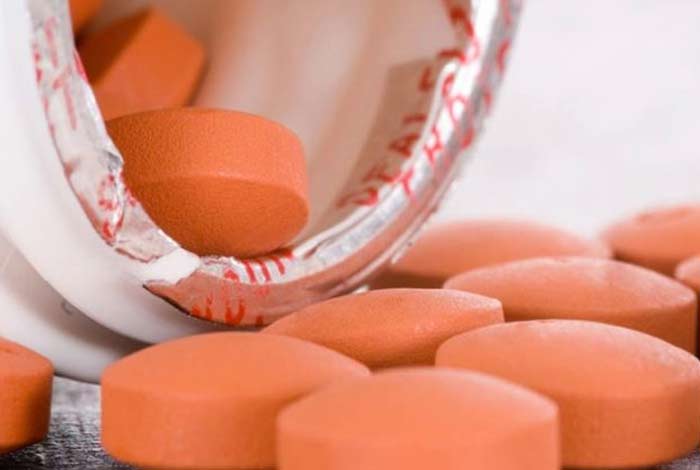
Natural Ways to Cure Breast Cancer in Men
Following natural remedies to prevent and manage breast cancer in men can be considered:
- Garlic: It has antibiotic properties, which can help get rid of various infections. As per the National Center for Complementary and Alternative medicine, a compound, named alkyl sulfur is present in garlic, which makes it a good anticancer agent. It works by making cancer cells undergo natural cell death.
- Broccoli: It contains an enzyme, called linamarase, which breaks down cancer cells and kill cells that are tumorous.
- Grapes: It contains Proanthocyanidins – a polyphenol – which reduces the production of estrogen. Many studies have confirmed that grape extract attacks breast cancer tumors.
- Green Tea: It has anti-inflammatory properties and is very useful in preventing breast cancer development. It can be prepared by boiling some tea leaves in water till it becomes half.
- Lignans: These plant-based polyphenols slow down the rate of growth of estrogen-dependent tumors. Commonly found in sunflower seeds, cashews, strawberries and peanuts, these must be included in one’s daily diet.
- Vitamin D: It is found in milk, eggs, fish oil and so on. Vitamin D is known to reduce the prevalence of breast cancer.

Health Tip by Expert
Exercise cuts down the risk of developing breast cancer, so men of any age and weight must never give up on exercise. Also, eat a low-calorie diet as it slows down the spreading of breast cancer.

